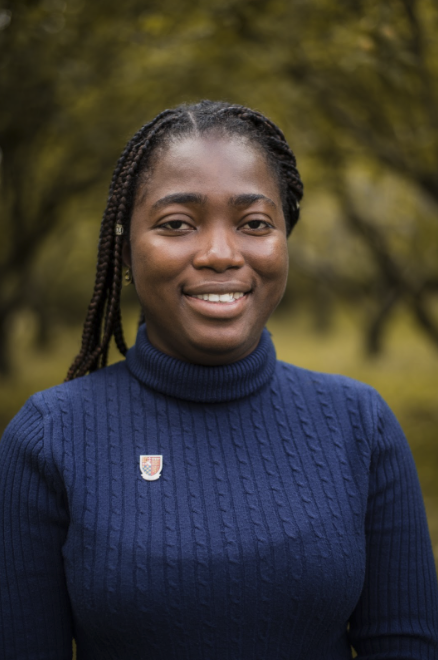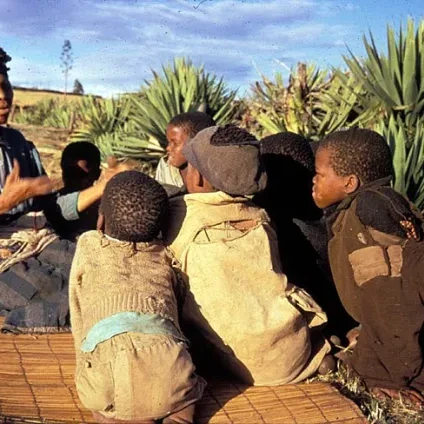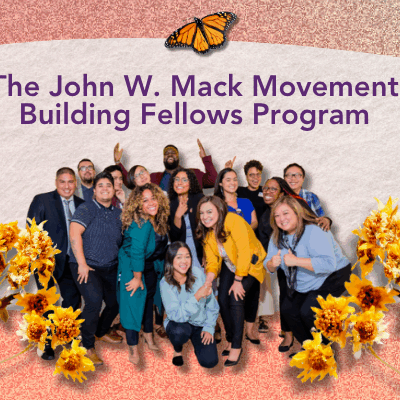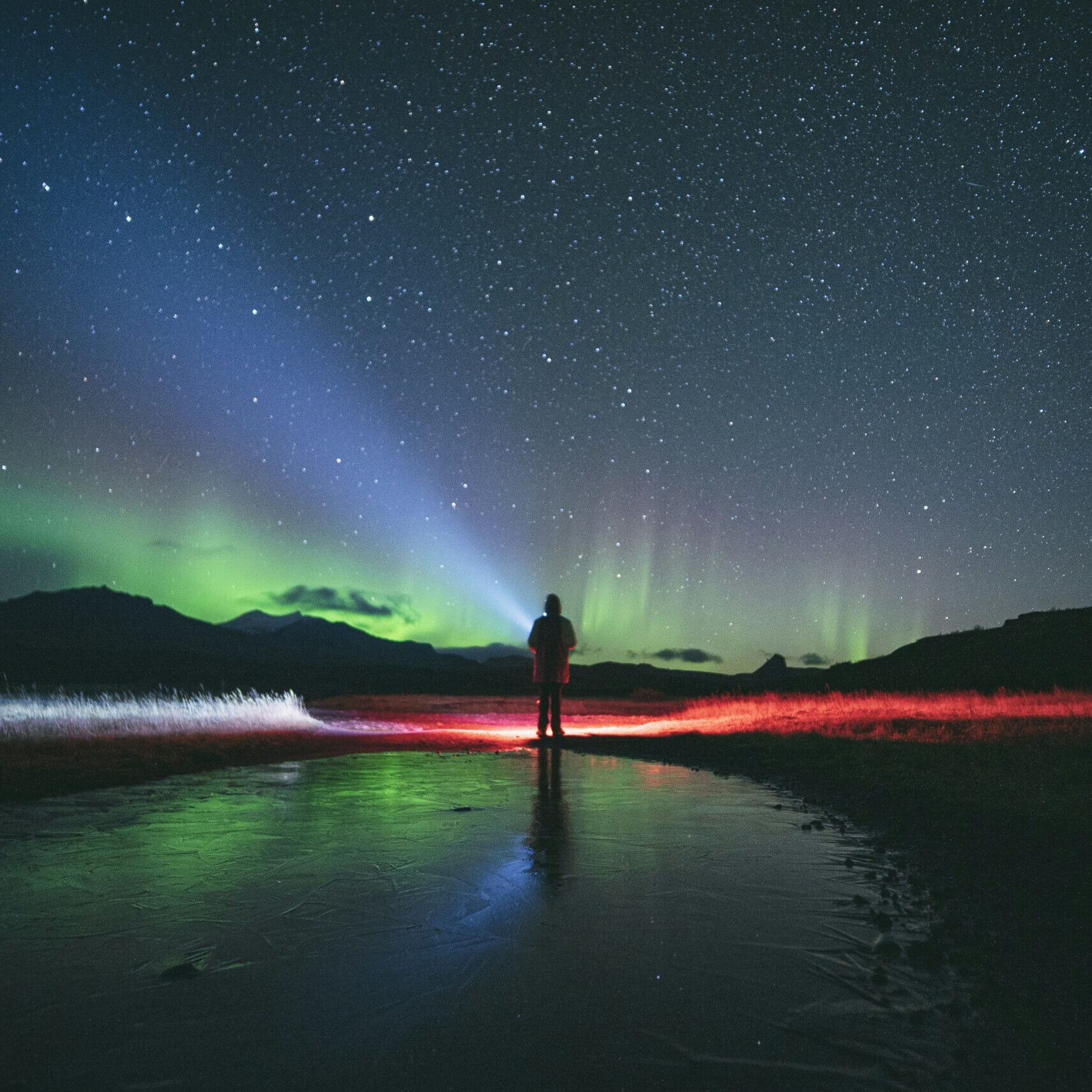Iyanuoluwa Moyinoluwa Shittu’s reflection on building resilient communities is part of Network Weaver’s BIPOC Editorial series. Learn more about the series and our submissions guidelines here. We invite you to connect with us at [email protected]
As AI becomes increasingly integrated into daily life and questions arise about its potential to replace community engagement and disrupt the dynamics of impact networks, we face a growing curiosity and challenge: Can we coexist as a technologically advanced society without eroding the innate human instincts that enable us to harmoniously weave societies, thereby allowing life to fulfill its magnificent evolutionary destiny?
As a conservationist currently pursuing the MPhil in Conservation Leadership at the University of Cambridge and leading the Black Ladies in Conservation and Environmental Leadership (BLACEL) Network as the founding president, I find myself compelled to address this dichotomy by turning to nature or potential solutions. Through my research, I have been trying to answer two questions: In what ways does nature support the survival of communities? Amidst the disruptive era of Artificial Intelligence (AI), how does Natural Intelligence (NI) empower us to maintain control?
Biomimicry: Nature’s Blueprint for Building Resilient Communities
Organisms have thrived on Earth for billions of years, evolving to meet a vast array of needs, from single-celled forms to the complex multitude of life forms present on Earth today. Biomimicry entails the adaptation of strategies found in nature to tackle human challenges sustainably. By drawing inspiration from natural processes, biomimicry offers the potential to develop innovative solutions that address our problems while minimizing negative impacts on the environment. For example, termite mounds maintain internal climate control despite external fluctuations, a model that architects can mimic for energy-efficient buildings. Similarly, the way ants work together to solve complex problems like finding food or building bridges in response to environmental challenges can inspire human systems of collaboration and resource management. By adopting these nature-inspired approaches, communities can become more sustainable and resilient, better equipped to handle challenges such as climate change, resource depletion, and social inequalities.
It’s truly inspiring to explore the learning patterns through which animals establish and maintain communities: the voting process through sneezing among African wild dogs, the bond of friendship among flamingos, the murmuration of starlings, the huddling behavior of penguins, and the beneficial role of habitat disturbances for bison in revitalizing the biodiversity of their grazing areas. It’s noteworthy that all these animal communities are tied to specific locations. Whether it’s wild dogs on savannahs, flamingos in wetlands, starlings far up in the sky, penguins on ice, or bison in tall grass prairies, a sense of place serves as a vital connection for community members. These connections extend beyond individual species to interactions among different species coexisting in the same environment. This connection between biomimicry and resilient communities lies in applying nature’s adaptive strategies to human systems. Just as ecosystems balance and sustain themselves through cooperation, diversity, and resource optimization, human communities can emulate these principles to create more resilient infrastructures, social networks, and resource-sharing models.
Designing Community Spaces for Wellbeing and Belonging
Integral to the process of weaving self-organized networks is intentionally designing activities in our community spaces that allow for collective intelligence, mutualism in diversity, and emergent transformations. These include orchestrating and guiding processes that foster a collective sense of shared identity and purpose, cultivating environments conducive to self-organization and spontaneous collaboration, curating and leveraging available resources, establishing diverse channels of communication, and facilitating the coordination of collaborative endeavors. Fostering community involves embracing our innate human inclination toward connection. What insights can we glean from observing the natural world?
Below I offer a simple and incomplete list inspired by Wildlife Biology and Biomimicry principles which offer strategies on how we can frame our social spaces and weave more resilient and self-evolving networks and communities:
Prioritizing Rituals
Rituals play a crucial role in binding communities together, imbuing every gathering routine with meaning and purpose. From elephants gathering to mourn their dead to marking important milestones, rituals foster a sense of belonging and strengthen the bonds of kinship. By infusing our rituals with creativity, intention, and symbolism, we deepen our connections with one another and create opportunities for shared experiences that nurture community cohesion.
Fostering Personal Encounters and Mutualism
Personal Encounters are intentional moments fostering genuine connections and meaningful relationships within communities. Clarifying the purpose and outcomes of one-on-one interactions aids in building supportive relationships and facilitating mutual benefit. Mutualism, akin to symbiotic relationships in nature, and just like the symbiotic interactions between hummingbirds and flowers, underscores reciprocal contributions for collective well-being. Cultivating a culture of generosity and reciprocity enriches communities, creating a vibrant ecosystem of mutual care and empowerment.
Decentralizing Network Structure
From termite mounds to coral reefs, nature demonstrates the beauty of emergent complexity, where simple interactions give rise to intricate patterns and structures. Similarly, our communities can embrace the spirit of emergence by nurturing a culture of autonomy, collaboration, and shared purpose, allowing for organic growth and adaptation in response to changing circumstances thereby highlighting the power of collective action and decentralized leadership in shaping community dynamics.
In conclusion, we must remember that building thriving communities is not about reinventing the wheel, but rather about rediscovering the timeless principles that have guided life on Earth for millennia. By aligning ourselves with the wisdom of nature, we can unlock the full potential of human collaboration and weave communities that flourish, grounded in compassion, creativity, and mutual support. By aligning ourselves with the interconnectedness of all living beings, we can co-create communities that honor our innate human instincts towards connection and belonging.
On Liberation:
What inspired you to write this particular piece?
What inspired me to write this piece stems from my deep-rooted passion for conservation and growing curiosity about how technology, particularly AI, shapes our world. As someone who has always drawn inspiration from nature, its resilience, adaptability, and the way it nurtures communities, I wanted to explore the intersection between artificial intelligence and natural intelligence. My journey, from studying Ecotourism and Wildlife Management in Nigeria to leading the Black Ladies in Conservation and Environmental Leadership (BLACEL) Network, has shown me that human connection and community are central to our survival.
Through my work, I’ve witnessed firsthand how communities rely on mutual support, much like ecosystems in nature. But as technology advances, I’ve questioned whether AI can disrupt these instinctual human bonds. How can we use what nature teaches us about cooperation and resilience to inform our approach to building stronger, more connected communities, even in a digital age?
I believe nature holds timeless wisdom on fostering resilient societies. This piece reflects my exploration of biomimicry, the ways animal communities function, and how we can apply those lessons to human spaces. My time in Cambridge has also broadened my perspective, especially in the context of leadership and how we can harness natural intelligence to thrive in an AI-driven world.
Through this article, I advocate for balancing technological advances with the inherent wisdom of nature so we can create communities that flourish, grounded in our instinctive need for connection and belonging.
What does liberation mean to you?
Liberation, to me, is deeply tied to freedom of expression, opportunity, and connection. It’s about having the power and autonomy to live in alignment with my values, passions, and purpose without being limited by societal, cultural, or environmental barriers. For me, liberation is not just personal but collective. It’s about empowering communities, especially marginalized ones to thrive and find their voice in spaces where they’ve historically been overlooked.
In conservation, liberation also means breaking free from practices that harm our planet and finding ways to live in harmony with nature. It’s about creating systems that uplift both people and the environment, ensuring that future generations inherit a world where biodiversity and community well-being coexist.
As a Nigerian woman in conservation leadership, liberation means standing in my truth, celebrating my heritage, and using my position to pave the way for others, especially women of color, to take up space and make impactful contributions. It’s about ensuring that everyone regardless of background has access to opportunities, knowledge, and the resources needed to effect change.
In essence, liberation is about the freedom to belong, to thrive, and to co-create a future where all forms of life can flourish.

Iyanuoluwa Moyinoluwa Shittu is a dedicated conservation educationist passionate about biodiversity conservation and community engagement. With over three years of field experience, she has worked closely with rural and vulnerable communities to raise awareness and drive conservation efforts across Africa. She holds a Master of Philosophy in Conservation Leadership from the University of Cambridge and currently leads the Black Ladies in Conservation and EnvironmentalLeadership (BLACEL) Network.
Iyanuoluwa’s work focuses on blending natural intelligence and network weaving to foster sustainable and resilient communities. Below you can read more about a budding project of hers which aims to provide sustainable water solutions to under-reached communities in Nigeria: https://moruwa.vzy.io/#
You can read more of her work below:
We appreciate your support!



